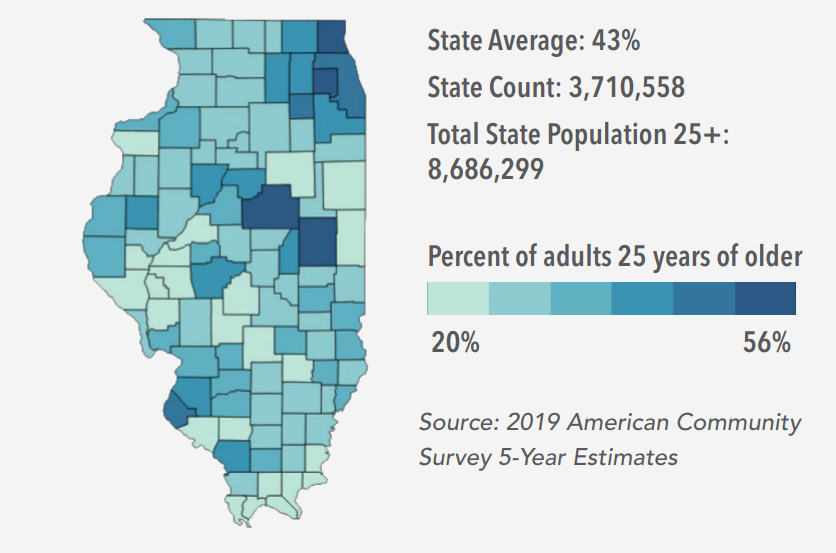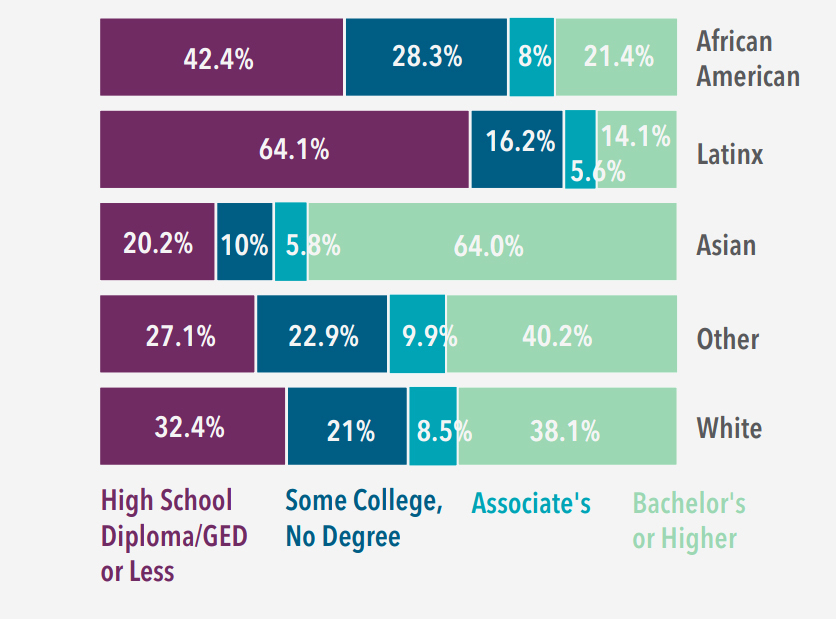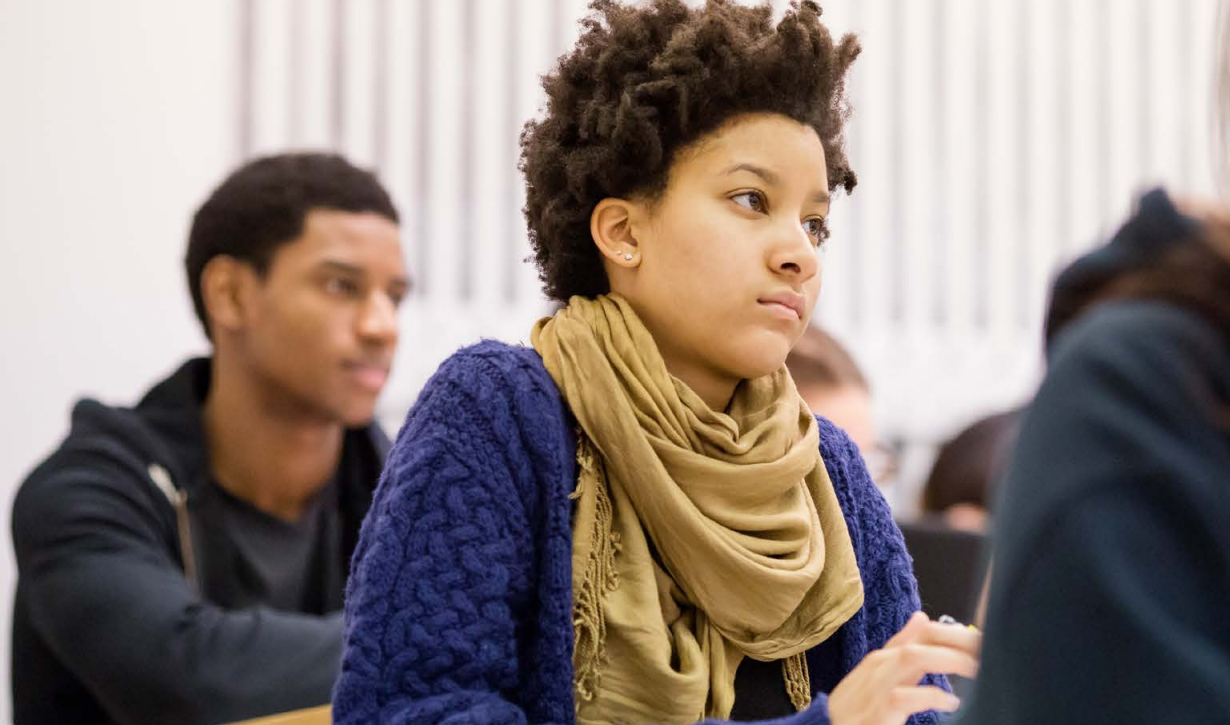Postsecondary Attainment in Illinois
Postsecondary education is key to ensuring individuals, families, and communities across Illinois can thrive. Individuals who hold a postsecondary credential have higher earnings, greater social mobility, improved health, and other positive life outcomes than their peers with less education.
2019 ASSOCIATE'S DEGREES OR HIGHER

EDUCATIONAL ATTAINMENT IN ILLINOIS (AGE 25+)
BY RACE/ETHNICITY

Ten years ago, Illinois adopted the 60 by 25 goal: that 60% of adults would have a postsecondary degree or credential by the year 2025 to meet projected workforce needs. Today, the percentage of jobs requiring postsecondary education is even higher. In 2009, approximately 38% of adults in Illinois had an associate’s degree or higher. In 2019, over 43% do. As the map shows, postsecondary attainment varies widely across the state, from a low of 21% of adults to a high of 57% of adults having an associate’s degree or higher.
While this data only reflects degree attainment, credentials are also considered in the 60% target. According to the Lumina Foundation, Illinois’ attainment is at 55% when certificates and short-term credentials are included.
The disparities in attainment outcomes are stark when we disaggregate by race/ethnicity. While 47% of white adults have a post-secondary degree, only 29% of African Americans and 20% of Latinx adults do. For bachelor’s degrees, Illinois has the 11th largest gap of any state in attainment between African American and white adults and the 7th largest gap between Latinx and whites.
Equally significant are the percent of adults with some college, but no degree. That represents 324,000 African American, 195,000 Latinx, and 1.2 million white adults who started college but never earned a degree.1 And it is worth noting the very large percentage, especially of Latinx adults, who have only a high school diploma, GED or less.
The challenge becomes even more clear as we look at the demographic projections out to 2050. The percent of the state’s population that is white is projected to decline by 17.5%, while the Latinx population is projected to grow by over 60%, and the African American population is projected to stay relatively steady.
Illinois is also facing a projected decline in the number of high school graduates due to demographic shifts. According to recently released demographic projections by the Western Interstate Commission for Higher education (WICHE) study in Knocking at the College Door, the number of Illinois high school graduates each year is projected to decline, most precipitously starting in 2026, from just over 148,000 in 2025 to approximately 115,000 in 2037.2
We must address these disparate attainment rates and demographic shifts. It cannot be done by focusing on high school students alone, although better serving high school graduates is essential. We must re-engage adults in higher education and ensure their success.

There are 324,000 African American, 195,000 Latinx, and 1.2 million white adults who started college but never received a degree.
_
1 Because the data only shows postsecondary degree, we cannot tell what percent of these may have
attained a credential rather than a degree.
2 A projected growth in Latinx high school graduates through 2025 helps to moderate the overall
decline in high school graduates. The near-term declines are primarily being driven by the reduction in the
number of white high school graduates. When we reach 2026, the number of Latinx graduates begins to rapidly
decline and contributes to the larger overall declines.
The annual number of African American high school graduates declines slightly between now and 2025.
However, beginning in 2026, the declines begin to get larger as well.
Asians and those in the two or more races category will continue to incrementally grow, but neither group is
large enough to offset the losses among the other groups.